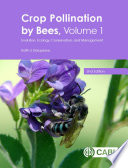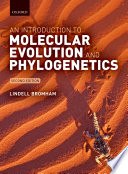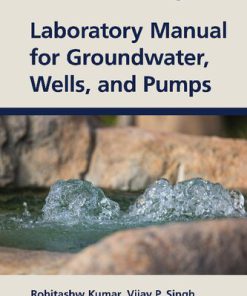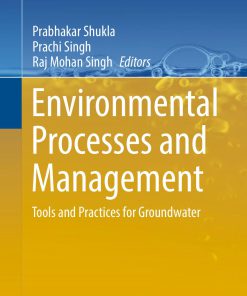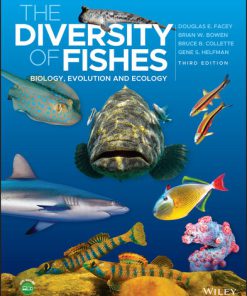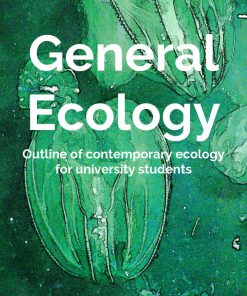Groundwater Ecology and Evolution 2nd Edition by Florian 9780128191200 0128191201
$50.00 Original price was: $50.00.$25.00Current price is: $25.00.
Groundwater Ecology and Evolution 2nd Edition Florian Malard – Ebook Instant Download/Delivery ISBN(s): 9780128191200, 0128191201
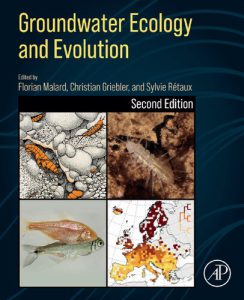
Product details:
- ISBN 10:0128191201
- ISBN 13: 9780128191200
- Author: Florian
Groundwater Ecology and Evolution
Groundwater Ecology and Evolution, Second Edition is designed to meet a multitude of audience needs. The state of the art in the discipline is provided by the articulation of six sections. The first three sections successively carry the reader into the basic attributes of groundwater ecosystems (section 1), the drivers and patterns of biodiversity (section 2), and the roles of organisms in groundwater ecosystems (section 3). The next two sections are devoted to evolutionary processes driving the acquisition of subterranean biological traits (section 4) and the way these traits are differently expressed among groundwater organisms (section 5). Finally, section 6 shows how knowledge acquired among multiple research fields (sections 1 to 5) is used to manage groundwater biodiversity and ecosystem services in the face of future groundwater resource use scenarios. Emphasis on the coherence and prospects of the whole book is given in the introduction and conclusion.
- Provides a modern synthesis of research dedicated to the study of groundwater biodiversity and ecosystems
- Bridges the gap between community ecology, evolution, and functional ecology, three research fields that have long been presented isolated from each other
- Explains how this trans-disciplinary integration of research contributes to understanding and managing of groundwater ecosystem functions
- Reveals the contribution of groundwater ecology and evolution in solving scientific questions well beyond the frontiers of groundwater systems
Table contents:
Copyright
List of contributors
Preface
Groundwater ecology and evolution: an introduction
Abstract
Rocks, water, and life
Research history in groundwater ecology and evolution
Groundwater research in the Anthropocene
Objective of the book
Audience
Structure and content of the book
Acknowledgments
Section I. Setting the scene: groundwater as ecosystems
Chapter 1. Hydrodynamics and geomorphology of groundwater environments
Introduction
The aquifer concept
Links to surface hydrology
Aquifer function
The chemical composition of groundwater
Chemical and nutrient fluxes in aquifers
Conclusion
Acknowledgments
Chapter 2. Classifying groundwater ecosystems
Introduction
Classification systems
Global scale
Continental scale
Landscape scale
Habitat/local scale
Conclusions
Glossary
Chapter 3. Physical and biogeochemical processes of hyporheic exchange in alluvial rivers
Introduction
The hyporheic zone
Predicting hyporheic exchange
The role of hyporheic flow on water quality
Conclusion
Chapter 4. Ecological and evolutionary jargon in subterranean biology
Introduction
Ecological classifications
Colonization and speciation
Morphological modification for subterranean life
Overall recommendations
Glossaries
Eco-Evo Glossary
Retired Speleobiological Glossary
Section II. Drivers and patterns of groundwater biodiversity
Chapter 5. Groundwater biodiversity and constraints to biological distribution
Introduction
An overview of groundwater biodiversity
Physical constraints to biological distribution
Chemical constraints to biological distribution
Species interactions
The effect of the past: paleogeographic events and historical climates
Conclusion
Chapter 6. Patterns and determinants of richness and composition of the groundwater fauna
Introduction
Patterns of species richness
Patterns of species composition
Toward a multifaceted approach to groundwater biodiversity patterns
Chapter 7. Phylogenies reveal speciation dynamics: case studies from groundwater
Introduction
Single colonization versus multiple colonizations from surface ancestors
Speciation from subterranean ancestors
Speciation from subterranean ancestors: likely mechanisms
Drivers of subterranean diversity: the role of paleoclimatic and paleogeological events
Synthesis and future prospects
Chapter 8. Dispersal and geographic range size in groundwater
Introduction
Evolution of dispersal
Range size
Groundwater landscape connectivity modulates dispersal
Conclusion
Section III. Roles of organisms in groundwater
Chapter 9. Microbial diversity and processes in groundwater
Introduction
Ecological processes determining microbial community diversity and composition
Microbial communities and biogeochemical cycles
Microbial attenuation of groundwater contaminants and bottlenecks
Resistance and resilience of groundwater microbial communities to perturbations
Outlook
Acknowledgments
Chapter 10. Groundwater food webs
Introduction
Basal energy dynamics in groundwater food webs
The role of habitat in groundwater food web dynamics
The role of food web processes in groundwater community dynamics
Trophic niche diversification in groundwater ecosystems
Future directions
Chapter 11. Role of invertebrates in groundwater ecosystem processes and services
Introduction
Trophic actions of invertebrates
Ecosystem engineering activities by invertebrates
Conceptual model of the role of invertebrates on ecosystem processes and consequences for ecosystem services
Environmental impacts on surface water–groundwater interfaces and consequences for the provision of ecosystem services by invertebrates
Suggestions for future research directions
Section IV. Principles of evolution in groundwater
Chapter 12. Voices from the underground: animal models for the study of trait evolution during groundwater colonization and adaptation
Introduction
Brief historical timeline
Groundwater model systems
Troglomorphic traits
Timeline of troglomorphic trait evolution
Evolutionary developmental biology of groundwater organisms
Evolutionary genomics of groundwater organisms
Conclusions
Acknowledgments
Chapter 13. The olm (Proteus anguinus), a flagship groundwater species
Introduction
The historical rise to fame
Systematics and evolution
Molecular ecology and conservation genetics
Morphology and sensory systems of a groundwater top predator
Reproductive peculiarities
The overlooked part of groundwater ecology: symbioses, pathogens and parasites
Conservation
Conclusive remarks on flagship species in groundwater
Chapter 14. The Asellus aquaticus species complex: an invertebrate model in subterranean evolution
Introduction
Phylogeography and population structure
Phenotypic evolution of subterranean populations
Raising and breeding in the laboratory
Genetic basis of subterranean-related traits
Evolutionary development (evo-devo)
Comparative transcriptomics
Conclusions and prospect
Chapter 15. Developmental and genetic basis of troglomorphic traits in the teleost fish Astyanax mexicanus
The history of genetic and genomic studies of troglomorphy in Astyanax
Developmental basis of troglomorphy in Astyanax
Conclusions
Acknowledgments
Chapter 16. Ecological and evolutionary perspectives on groundwater colonization by the amphipod crustacean Gammarus minus
Introduction
Ecological setting and morphological variation
Upstream colonization of subterranean waters by Gammarus minus
Impetus for colonizing cave streams
Multiple independent colonization of cave streams
Evolutionary perspectives
Melanin pigment loss and innate immunity
Future directions
Chapter 17. Evolutionary genomics and transcriptomics in groundwater animals
Introduction
Evolution of genes and genome architecture
Evolution of gene expression in groundwater
Conclusion
Section V. Biological traits in groundwater
Chapter 18. Dissolving morphological and behavioral traits of groundwater animals into a functional phenotype
Introduction
Habitat template
Morphological-behavioral functional phenotype
Synthesis and perspectives
Chapter 19. Life histories in groundwater organisms
Introduction
A brief overview of life history evolution, life history traits, and life table variables
The current conceptual model of life history evolution in groundwater species
Support for the current conceptual model of life history evolution in groundwater species
Conclusions
Chapter 20. Physiological tolerance and ecotoxicological constraints of groundwater fauna
Introduction
Physiological tolerance of groundwater invertebrates to changing thermal conditions
Physiological tolerance of groundwater organisms to chemical stress
Physiological tolerance of groundwater organisms to light, food and oxygen variations: indications for ecotoxicological protocols
Conclusions
Acknowledgments
Section VI. Biodiversity and ecosystem management in groundwater
Chapter 21. Global groundwater in the Anthropocene
Introduction
Groundwater availability and distribution
Frameworks for sustainable use of groundwater in the Anthropocene
Anthropogenic threats to groundwater
Outlook
Glossary
Acknowledgments
Chapter 22. Assessing groundwater ecosystem health, status, and services
Introduction
Assessing ecosystem health and condition
Indicators of ecosystem health and condition
Defining the reference condition for groundwater ecosystems
Combining indicators into summary indices
Predicting ecosystem health and condition
Future directions
Chapter 23. Recent concepts and approaches for conserving groundwater biodiversity
Introduction
Past concepts and approaches in groundwater biodiversity conservation
Recent concepts and approaches in groundwater biodiversity conservation
Conclusion and future directions
Chapter 24. Legal frameworks for the conservation and sustainable management of groundwater ecosystems
Introduction
Conservation of groundwater ecosystems and species at risk
Why study, assess, and protect groundwater ecosystems?
Legal frameworks related to groundwater ecosystems
Current challenges and the future of groundwater conservation
The ecological and evolutionary unity and diversity of groundwater ecosystems—conclusions and perspective
Index
People also search:
groundwater ecology
groundwater ecology and evolution
groundwater ecology definition
what is water ecology
groundwater is best described as
You may also like…
Biology and other natural sciences
Engineering - Aerospace Engineering
Biology and other natural sciences
An Introduction to Molecular Evolution and Phylogenetics 2nd Edition Bromham
Astronomy - Outer Space - Observation & Exploration
Biology and other natural sciences - Zoology
The Diversity of Fishes: Biology, Evolution and Ecology, 3rd Edition Douglas E. Facey
Engineering - Environmental
Environmental Processes and Management: Tools and Practices for Groundwater Prabhakar Shukla




